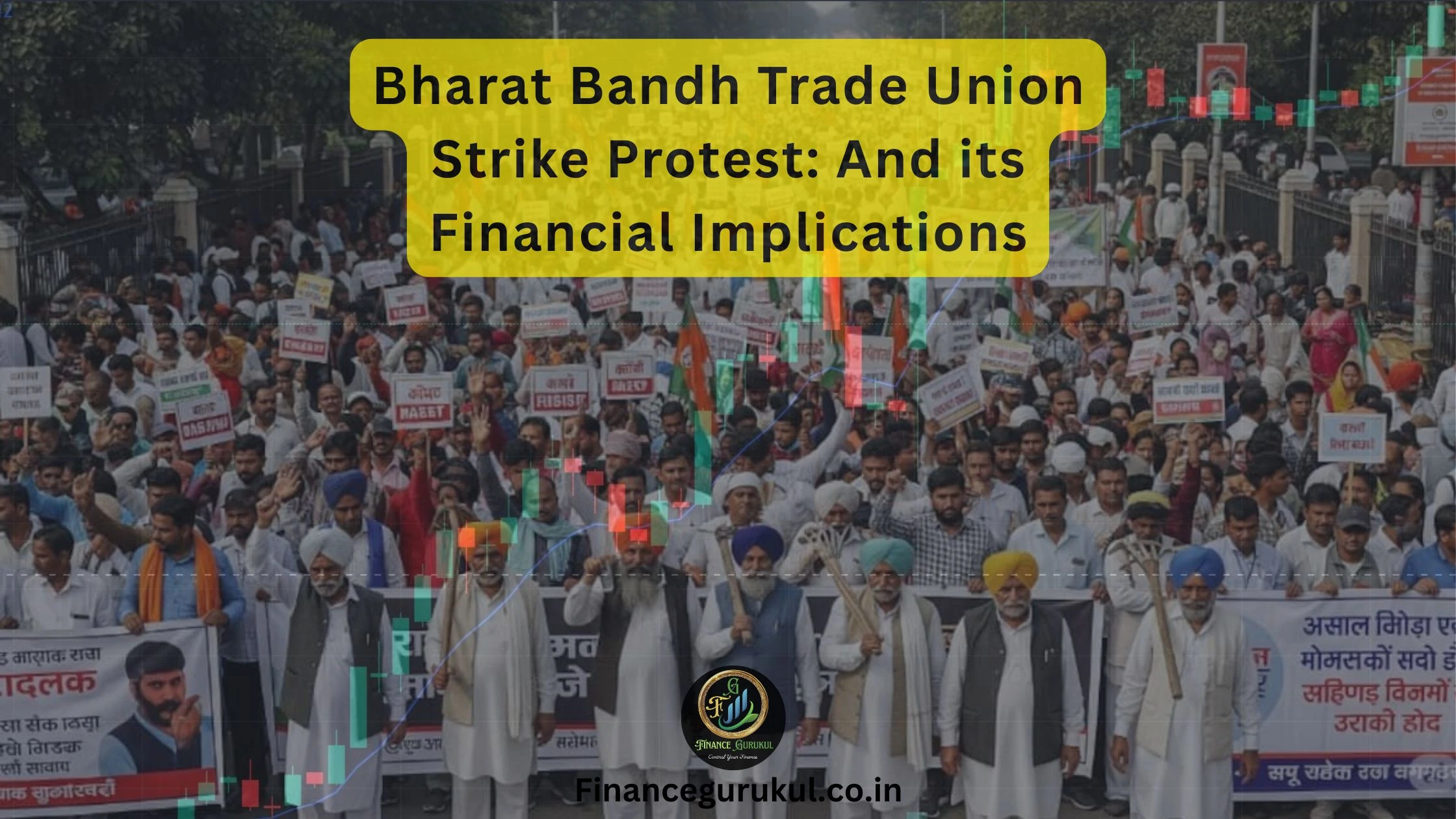
Bharat Bandh Trade Union Strike Protest: Unpacking the Nationwide Trade Union Strike and its Financial Implications
India frequently witnesses calls for ‘Bharat Bandh’ by various trade unions, a collective protest action that can bring economic activity to a standstill across various sectors. These strikes are not merely symbolic; they are a powerful expression of dissent aimed at influencing government policies. Understanding the reasons behind these protests, their demands, and their potential impact on the Indian financial market is crucial for investors, businesses, and the general public alike.
What Do Indian Workers Want? The Core of the Protests
The recent Bharat Bandh, called by a forum of 10 central trade unions and their associates, is a stark reminder of ongoing labour concerns. At its heart, the protests stem from what unions describe as “anti-worker, anti-farmer, and anti-national pro-corporate policies” of the government. Indian workers, represented by these unions, are primarily seeking:
- Reversal of New Labour Codes: A major point of contention is the four new labor codes passed by Parliament. Unions allege these codes aim to weaken workers’ rights, dilute the power of trade unions, extend working hours, and effectively decriminalize employer violations of labor laws. They believe these codes undermine the fundamental right to collective bargaining and striking.
- Addressing Unemployment and Job Creation: Workers are demanding concrete measures to tackle the rising unemployment rate. This includes calls for immediate recruitment against sanctioned government posts, creation of more jobs across sectors, and an end to policies promoting contractualization and outsourcing, which they argue lead to job insecurity and lower wages.
- Fair Wages and Social Security: A key demand is an increase in minimum wages, particularly for workers in schemes like MGNREGA, and the enactment of similar employment guarantee legislation for urban areas. They also highlight concerns about decreasing wages and cuts in social sector spending on essential services like education and healthcare, which disproportionately affect lower-income groups.
- Curbing Privatization: The unions are vehemently opposing the government’s aggressive privatization drive of public sector enterprises and public services. They argue that this not only leads to job losses but also compromises the quality and accessibility of essential services for the common citizen.
- Dialogue and Engagement: A significant grievance is the government’s alleged reluctance to engage in meaningful dialogue with trade unions. The forum points out the decade-long failure to conduct the annual Indian Labour Conference, which is crucial for addressing labor grievances collaboratively.
- Support for Farmers: With farmer organizations often extending support to these Bandhs, demands also include issues like ensuring Minimum Support Price (MSP) for crops as per the Swaminathan Commission formula (C2 + 50%) and loan waivers for farmers.
Also Read: Why Health Insurance is Important for Your Financial Future
Why Are They Protesting? The Underlying Grievances
The current wave of protests is a culmination of long-standing grievances that workers feel have been ignored. The unions contend that the government’s economic policies are:
- Fueling Unemployment: Despite claims of economic growth, the policies are perceived to be leading to increased joblessness and a lack of opportunities for the youth.
- Driving Up Prices: Rising prices of essential commodities are a major concern, eroding the purchasing power of ordinary citizens.
- Depressing Wages: Workers feel that their wages are not keeping pace with inflation, leading to a decline in their real income.
- Reducing Social Sector Spending: Cuts in government spending on crucial sectors like education, health, and basic civic amenities are seen as a move away from a welfare state model.
- Prioritizing Corporate Interests: The overarching accusation is that the government is increasingly formulating policies that favor Indian and foreign corporations at the expense of workers, farmers, and the broader public.
Bharat Bandh Trade Union Strike Protest: Impact on the Indian Financial Market
While a Bharat Bandh can significantly disrupt economic activity, its direct impact on the Indian financial market is often nuanced and can vary.
Immediate Operational Disruptions: Sectors like banking, insurance, postal services, coal mining, state transport, and certain public sector units are typically the most affected. This can lead to:
- Reduced Productivity: Factories, mines, and offices may experience closures or reduced staff, impacting production and service delivery.
- Supply Chain Disruptions: Transportation blockades can halt the movement of goods, affecting manufacturing and retail.
- Banking and Financial Services: While stock exchanges like NSE and BSE generally remain open for trading on Bandh days, the physical operations of banks and financial institutions can be impacted, affecting cheque clearances, branch services, and other customer interactions.
- Investor Sentiment: Persistent or widespread strikes can dent investor confidence, particularly for foreign investors looking for stable and predictable business environments. This might lead to:
- Short-term Volatility: The stock market might witness some short-term volatility as investors react to news of disruptions.
- Sector-Specific Impact: Companies heavily reliant on the affected sectors (e.g., manufacturing, logistics, public sector banks) might see their stock prices under pressure.
- Limited Long-Term Direct Impact (Typically): Historically, unless a Bandh is prolonged or signals a fundamental shift in economic policy or widespread instability, its long-term direct impact on the overall financial market is often limited. Markets tend to price in such events, and economic activity usually rebounds quickly once the strike concludes.
Impact on Specific Industries:
- Manufacturing and Industrials: Direct loss of production days and disruption to supply chains.
- Logistics and Transportation: Significant delays and revenue loss.
- Banking and Financial Services: Operational slowdowns, though digital banking mitigates some impact.
- Public Sector Undertakings (PSUs): Direct impact on their operations and potentially their profitability.
What Prevention We Need to Do (For Businesses and Individuals)
Preparing for a Bharat Bandh is essential to minimize its negative consequences.
For Businesses:
- Contingency Planning: Develop detailed contingency plans for potential disruptions, including alternative supply routes, remote work options for employees, and backup communication channels.
- Communicate with Stakeholders: Inform employees, customers, and suppliers about potential disruptions and any changes in operations.
- Prioritize Essential Services: Identify critical business functions and ensure adequate resources are available to maintain them, even with reduced staff.
- Inventory Management: For businesses reliant on physical goods, maintain adequate inventory levels to withstand short-term supply chain disruptions.
- Digital Transformation: Invest in digital tools and processes to enable remote operations and minimize reliance on physical presence.
- Monitor News and Updates: Stay informed about the latest developments regarding the Bandh, including specific areas of impact and any official advisories.
For Individuals:
- Plan Travel in Advance: Anticipate disruptions to public transport and road travel. Use alternative modes of transport if possible, or plan to work from home.
- Stock Up on Essentials: Ensure you have enough essential groceries, medicines, and other necessities to avoid last-minute rush or shortages.
- Be Aware of Bank Operations: While stock markets may be open, be prepared for potential disruptions in physical banking services. Utilize online banking and ATMs for urgent transactions.
- Stay Informed: Follow reliable news sources for updates on the Bandh and local advisories.
- Prioritize Safety: Avoid areas of protest or congestion to ensure personal safety.
In conclusion, while Bharat Bandhs serve as a critical mechanism for workers and unions to voice their demands and highlight pressing socio-economic issues, their disruptive nature necessitates careful planning and awareness. For the Indian financial market, the impact is usually transient, but for individual businesses and citizens, proactive measures can significantly mitigate the challenges posed by such nationwide protests. Finance Gurukul advises all its readers to remain informed and prepared during such events.



